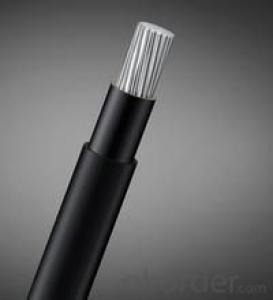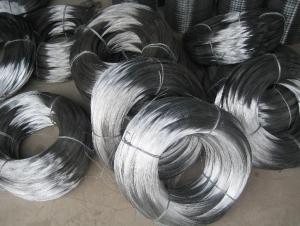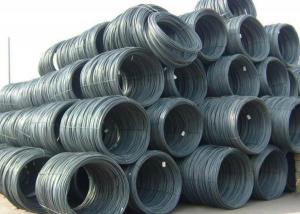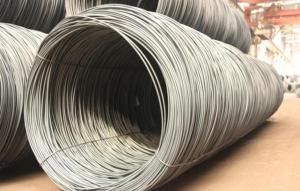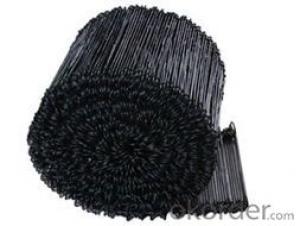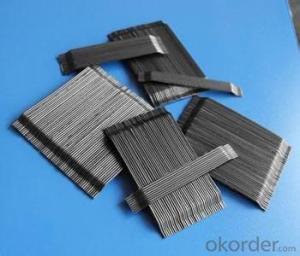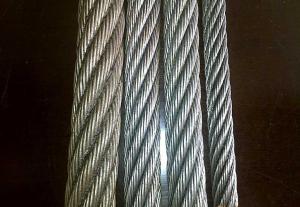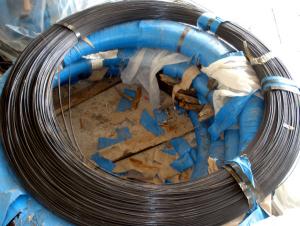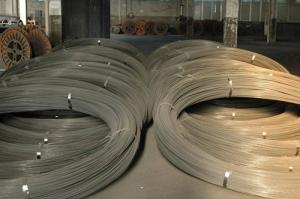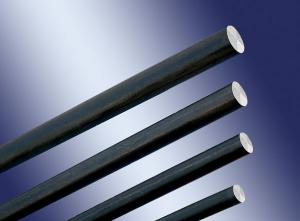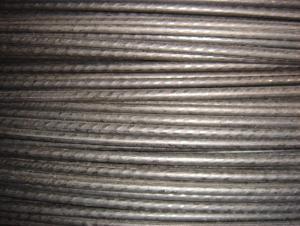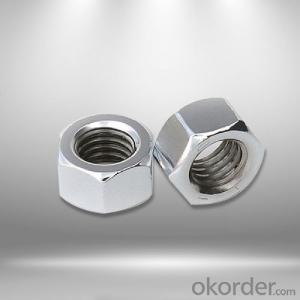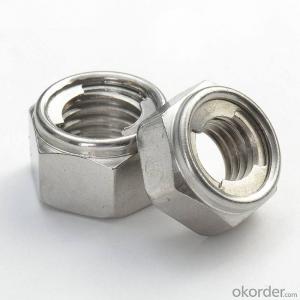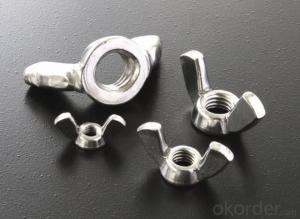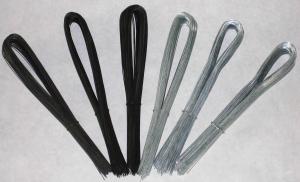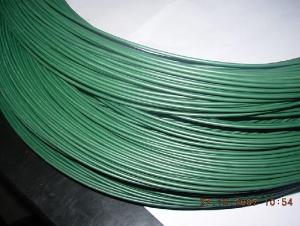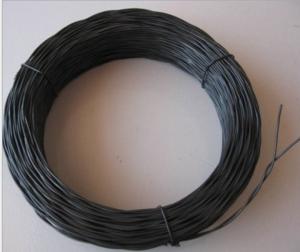F 46 insulated special rubber
- Loading Port:
- China Main Port
- Payment Terms:
- TT OR LC
- Min Order Qty:
- -
- Supply Capability:
- 2000km m/month
OKorder Service Pledge
OKorder Financial Service
You Might Also Like
Quick Details
Place of Origin:Jiangsu, China (Mainland)
Model Number:10 conductor
Conductor Material:Copper
Insulation Material:F46
Jacket:Rubber
Number of Conductors:10
Application:oilfield, well logging, oil exploration
Packaging & Delivery
| Packaging Details: | Each Pieces Packed in High Quality Plastic Pouch. Then all Packed Products in One Master Export Box. |
|---|---|
| Delivery Detail: | 30 days after payment |
Specifications
rubber cable
a. Quick delivery
b. Competitive price with high quality
c. Free samples
d. Expert in cable and wire
10-core fluoroplastic F46 insulated special rubber protected electrode cable-20.06
1. Product Standard
The product is manufactured according to the standard of SY/T6600-2004.
2. Application
This special 10 core rebber electrode cable is for oilfield logging and is suitable for bearing load connection between oilfield downhole testing instrument and transmission of signal cable. Inside the core place setting load bearing steel strand and outside the bearing load of steel strand setting rubber sheath which can withstand oil, acid, alkali. There are 10 group copper core with fluoroplastics insulation outside, special rubber sheath outside each insulation can withstand oil, acid, alkali. Special rubber sheath outside protect this cable from oil, acid, alkali and make it work in oil, acid, alkali environment for a long time.
3. Operating Characteristics
a.The lowest temperature that cable could work should not be lower than-30°C.
b.Max temperature is 232°C for short period (2h maximum duration each time).
c.Minimum bending radius is 30 times of cable diameter.
CONSTRUCTION DESCRIPTION:
Copper Construction: | 7×0.0126’’ | 7×0.32mm |
Plastic Type: | F46 |
|
Insulation Thickness: | 0.0724’’ | 1.84 mm |
The Rubber Protecting: | 0.1338’’ | 2.95 mm |
CABLE CHARACTERISTICS:
PHYSICAL:
Cable Diameter: | 0.811’’±0.02’’ | (20.60 mm ±0.50 mm) |
Cable Weight In Air: | 457 lbs/Kft | 680 Kg/Km |
Temperature Rating : | 450 °F | 232 °C |
MECHANICAL:
Cable Breaking Strength: | 11000 lbs | 49 KN |
Minimum Sheave Diameter: | 20’’ | 500 mm |
ELECTRICAL:
Voltage Rating: | 1000 VDC | 1000 VDC |
Insulation Resistance: | 50000 MΩ·Kft | 15000 MΩ·Km |
DC Resistance @ 20°C | 11 Ω/Kft | 36 Ω/Km |
Cap Typical @ 1 KHz | 40 Pf/ft | 131 Pf/m |
TIP: We can produce electrode cable of which breaking strength is greater than the same size over 60KN according to our customer’s requirements.
- Q:Trying to wire up a toogle swithch for boat light. Have a positive and negiative wire coming from the battery. I have 2 wires coming out of the toggle switch and two wires coming from the light. What goes where? Thanks
- Like so: Battery (+) to inline fuse holder (within 6 inches of the battery). Fuse holder to switch. Switch to light. Light to battery (-). If you don't know what amp fuse you need, 3 amps should be more than enough in most cases. Please, please, please don't leave out the fuse -- boat wiring is subjected to a lot more shock, vibration than household or automotive. If the insulation gets chafed off the wires (more common than you might think) you can get a direct short to ground, which *will* get hot enough to start a fire. You really don't want to be dealing with a fire on your boat. Sounds like your switch is faulty. +++++++++++++++++++++++++++++++++++++ just read kilo's answer -- that's an interesting way to use a DPST switch. It'll certainly work, but seems a bit redundant to me. I just thought they were handy for switching two devices with separate 12V feeds (I used one for my helm lighting, with the tach being powered from the keyswitch accessory post, so it only lights up when the key's on). but he makes a good point; if your switch has 4 contact points (instead of just 2), make sure you use 2 on one side or the other (rather than the top 2 or bottom 2).
- Q:How do you properly wrap copper wires? We have been using electrical tape and it's melting the tape. This is in a camper, and it's in the electrical box. We're using this tape because the wires kept touching and arcing off of each other...I'm guessing :/
- If the wire is not heavy enough it will heat up from the amount of current through it. If there is a short circuit somewhere, the wires will heat up regardless. It may not be rocket science, but it certainly is electrical engineering.
- Q:i had a wired linksys router. can a linksys wireless network usb receive signal from the wired router.
- The wired router does not have a wireless capability (no wireless access point) per your description. The USB wireless network interface would connect to a pc and enable the pc to interface with a wireless access point. Since your router has no wireless access point, the USB device has nothing to which it can link. Therefore the answer to your question is NO. Now if you add a wireless access point as a wired device to your router and properly configure it and the USB device you can achieve what you want to do.
- Q:my light stopped working ( a chandalier ). It has brown wires, blue wires, red wires, beige wires, and white wires.
- Wow, this is a first. most lights have just two wires a black<hot and a white<neutral wire and you just hook black to black using a wire-nut and the same with the white wire and the switch completes the circuit. In some ceiling fans they have blue or brown wires that are also hot to run to the lights at the bottom of the ceiling fans to power that but a chandelier should not have all of that. You might want to call in an electrician for this particular problem because if its a junction box with other wires hooked into that area it could cause a fire or worse a loss of life if you don't know what your doing and disconnect the electricity from the electrical panel by shutting off the power and checking it with a meter. Hope this helps and I would love to see a pic of that chandelier that has that many different color wires!!! wow
- Q:my dogs have chewed my central air contactor wire.my ac will not cut on. does anyone knows how to replace them and where to buy replacement wires locally( i live in Dallas TX.) i would like to do it myself instead of spending a lot of money.
- This should be copper wire and a splice could be made with little risk since the thermostat is a low voltage circuit in most cases. Try the local HVAC contractor for some of the type you need. There are different types ( number of conductors) for different controllers so they need to match. If you just have the HVAC contractor do a fall service on the system they can make the needed repairs and prepare the whole system for the winter. It was probably used a lot this last summer so a service is about due.
- Q:The new light has 1 live, 1 neutral 1 earth wire, do i remove the earth connect the reds if so what about the 2 blacks?
- No! Wire the new light exactly like the light that you removed. If you don't remember what wire went where on the old light then you made a mistake by removing the old one without marking the wires or at least taking a cell phone picture or something. It sounds like there is probably more than one light fixture being controlled by that switch. It's hard to tell by your description. Electrons don't flow by wire color. There is no way to really tell what is going on by naming colors. Come back on here when you have a better description of what is going on. How many lights come on when you flip that switch? Is there more than one switch that controls that fixture? Which wires were hooked to the old light? Are any of the wires still wire nutted together? Don't be experimenting by hooking that earth ground wire to any other wire. Leave it hooked to the ground lug on the box. It has nothing to do with the light operating. It's for safety.
- Q:i have 4 wires going to a ac unit #10 wires 2 wires for each cir. and i need to know how many amps can I run with 2 #10 copper for one side of the breaker
- 10 wire is rated for a maximum of 30 amps. This size wire can not be run in parallel to carry more current. I suggest that you have a local qualified professional electrician do the work since you seem unsure about what you are asking.
- Q:electrical wire prices
- It's merely a coincidence.. The price of OIL and the price of COPPER have been in flux for years... Precisely why in america they want to get rid of the penny... it will soon cost more than a penny to make them. Just imagine if they were solid copper like the old wheat backs.
- Q:putting new plug on wire. which wire connectswhere?
- If you're talking about a ''polarized'' plug the hot wire (usually all black) will attach to the narrow side. And the neutral (usually with a white stripe) will attach to the fat side.
- Q:I'm doin this thing where I need to connect some wires and one part uses Apple iPod headphones. Inside those wires, they have insulation. I burnt the wires so the insulation would not be in the way. Will the wires still conduct the electricity? Or will I just need to find some other headphones without insulation to do this with?
- It would help to know exactly what you're trying to do here. Like Gary said, I'm not sure what you mean by inside those wires they have insulation. I'm trying to guess what you're trying to do here and you say you need to connect some wires. Are you trying to connect two sets of insulated wires together? If so, I'm guessing that you needed to strip the insulation off of the ends of the wires to expose the conductors and connect together? If that's the case, usually we use a wire stripper or a small razor blade to cut the insulator around the wire and then pull off the sheath, leaving clean wire underneath. Burning the insulation off is not going to make copper wire not work (if you oxidized the copper, you'd have to heat it way hotter than a typical flame, and it would not be metal any more--it would be crispy). So if you still have flexible metal left over after burning off the insulation, then you still have a conductor. The problem, and the reason why we don't usually burn off insulation is that you're going to end up with a bunch of burnt up goo and oxides on the surface of your wire which will make it not connect well with another wire surface to surface. You can probably solve this problem by lightly sanding or scratching the burnt parts of the wires. Or just cut off the burnt part and try stripping it with a blade instead. Then make sure to insulate your connection with electrical tape or something so that you don't have bare wires that can touch each other and short out. If you're trying to do something different, please explain more. In general, though, you're not going to ruin copper by burning it, but you will tend to coat the outside of the wire with stuff that doesn't insulate well. You want shiny copper when you are connecting two pieces together.
1. Manufacturer Overview |
|
|---|---|
| Location | |
| Year Established | |
| Annual Output Value | |
| Main Markets | |
| Company Certifications | |
2. Manufacturer Certificates |
|
|---|---|
| a) Certification Name | |
| Range | |
| Reference | |
| Validity Period | |
3. Manufacturer Capability |
|
|---|---|
| a)Trade Capacity | |
| Nearest Port | |
| Export Percentage | |
| No.of Employees in Trade Department | |
| Language Spoken: | |
| b)Factory Information | |
| Factory Size: | |
| No. of Production Lines | |
| Contract Manufacturing | |
| Product Price Range | |
Send your message to us
F 46 insulated special rubber
- Loading Port:
- China Main Port
- Payment Terms:
- TT OR LC
- Min Order Qty:
- -
- Supply Capability:
- 2000km m/month
OKorder Service Pledge
OKorder Financial Service
Similar products
New products
Hot products
Related keywords
